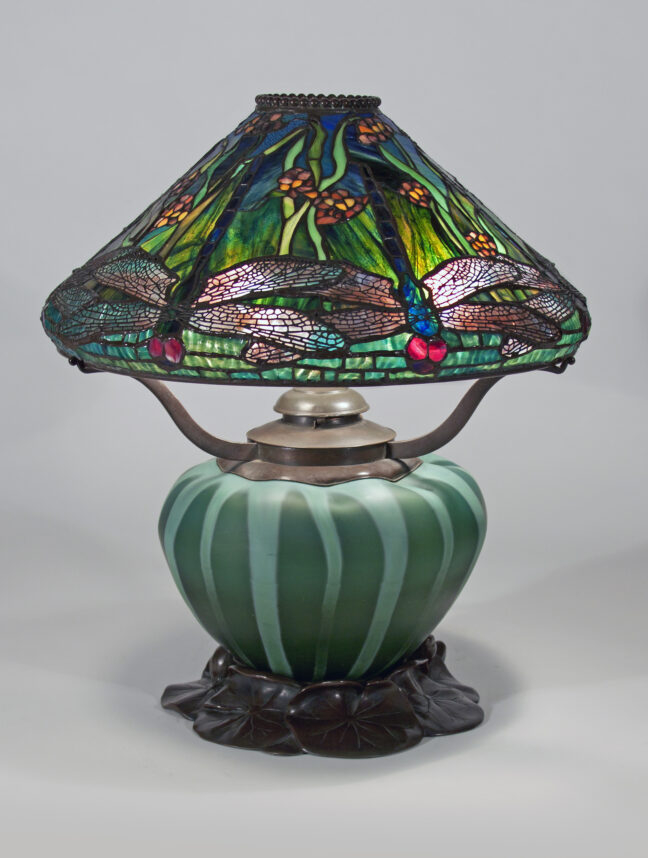Lillian Nassau was a pioneering dealer who single-handedly created a thriving market for Tiffany Studios. Today, the New York gallery is led by Arlie Sulka, who pairs the sparkling Tiffany lamps with Mid-century Modern furniture.
There’s something magical about Tiffany glass lamps. Their shimmering iridescence and finely detailed copper foil technique is incomparable to anything else on the market. Even in black and white, the pieces are unmistakable. A single glance at a historic photograph taken in the 1960s of a narrow space on Third Avenue, New York, crowded with twinkling pendants and lamps leaves no doubt to the origins of the work.
The photograph depicts the original showroom of Lillian Nassau, a gallery that dates back to 1945 and is synonymous with the work of Tiffany Studios. Today, it’s led by the indomitable Arlie Sulka, who has re-imagined Tiffany Studios for a new audience by pairing the elaborate work with Mid-century Modern furniture.
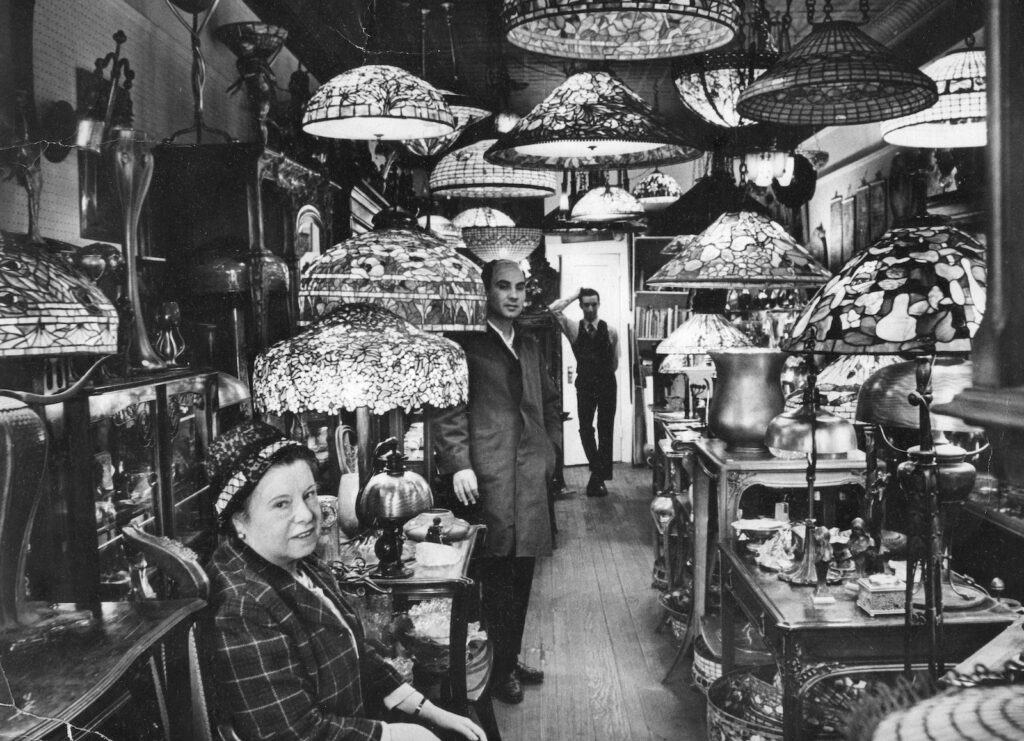
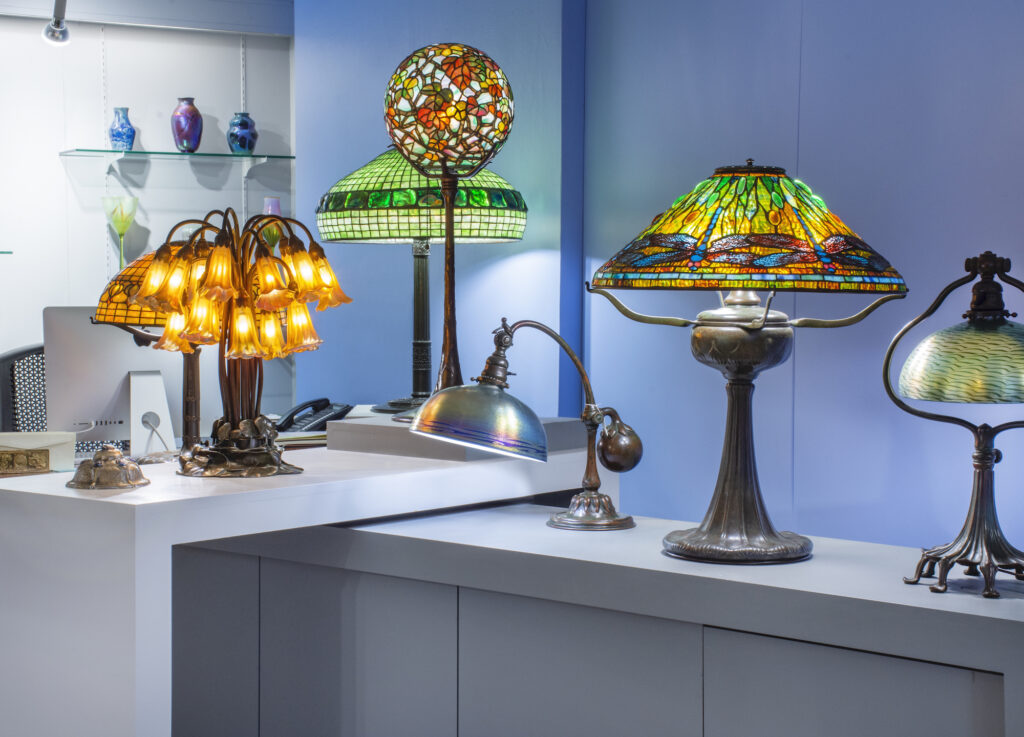
It’s a concept that was pioneered by American designer Edward Wormley. In the 1960s, he would pair Tiffany lamps with the starkly modern furniture he designed for Dunbar, and his compact Janus side tables were boldly embedded with Tiffany glass tiles. “He was combining two periods and it was very successful,” says Sulka. “I thought if he can do it, so can I. My philosophy is that great things always go together.”
My philosophy is that great things always go together
Arlie Sulka, owner, Lillian Nassau
This kind of fearless attitude has defined Sulka’s career from its earliest days. She was an art history major in college and was “hellbent” on moving to New York immediately on graduation. “I went home to Maine for the summer and then came straight to New York without a job, much to my parents’ chagrin,” she recalls. “I wanted a job in the art world, and landed one in a very small auction house where the attrition level was very high because the owner was quite difficult.”
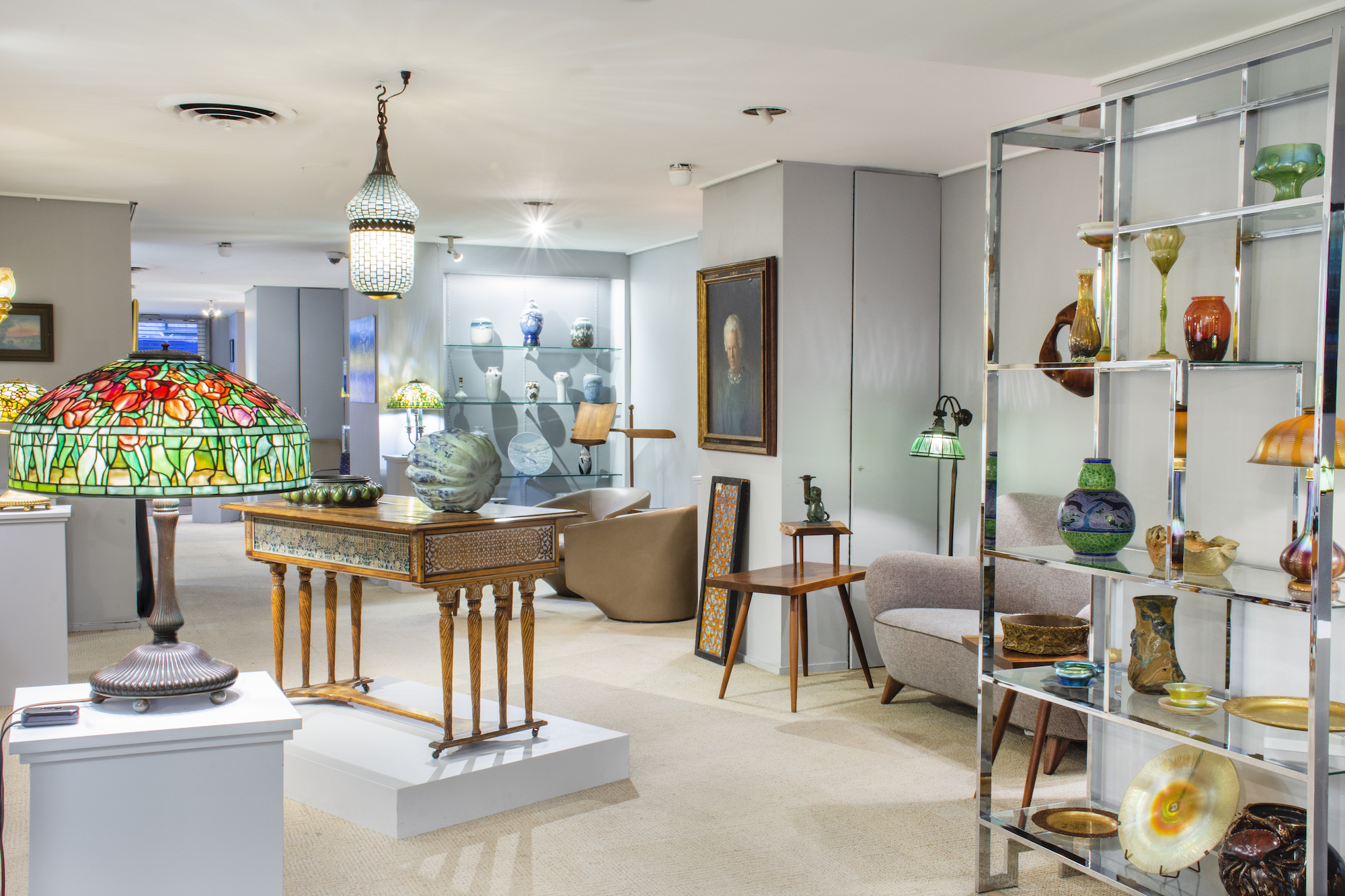
She persevered, and quickly rose through the ranks from administrative assistant to the cataloguer, and then becoming head of the department that handled early-20th-century design – and Tiffany Studios. “I love how happy the Tiffany lamps are,” she says. “They change a room and bring warmth to it. I think they’re at their finest on a rainy day as it’s like bringing in the sun.”
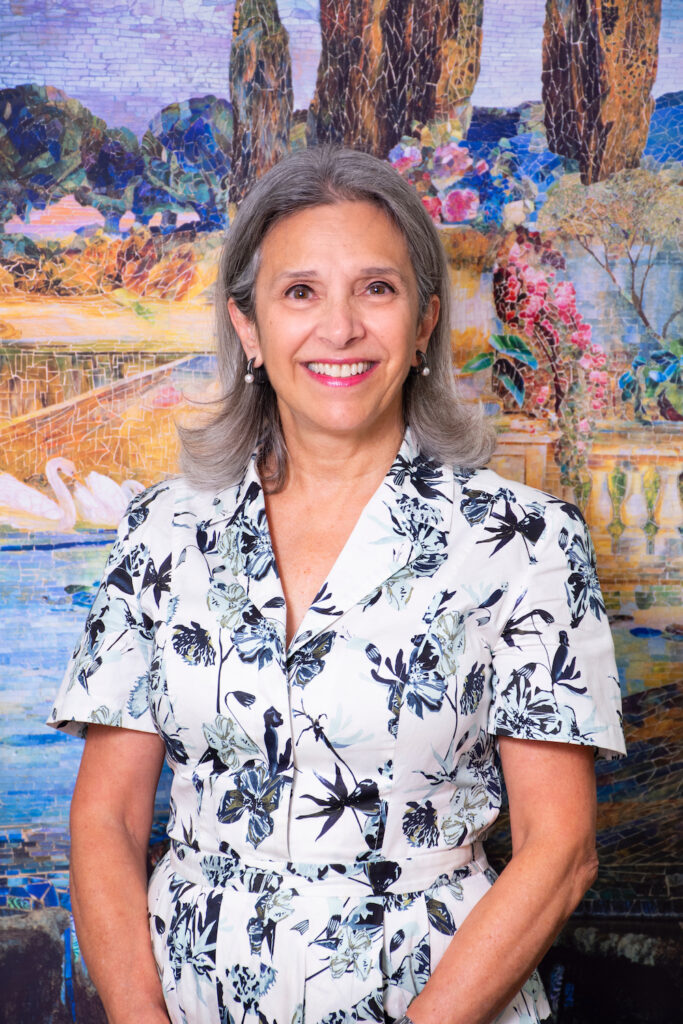
When Sulka began to think about making a change, she was offered a job by Lillian Nassau, a pioneering dealer who is credited with singlehandedly creating the market for Tiffany Studios. “I didn’t know who she was at first,” admits Sulka. “When I realised, I thought, ‘Oh my god, she is it, and I need to go take this job!’ She was a force to be reckoned with and was a great mentor as she was a strong woman who did it all on her own.”
Sulka worked for Nassau until the latter retired in the mid-1980s, and then worked for Nassau’s son, Paul. In 2006, Sulka made an offer on the business and Paul agreed to sell. “All of a sudden, I was in the driver’s seat,” she says. “I was on top of the world!”
Her first move was to introduce a carefully considered collection of Mid-century Modern furniture from the likes of Edward Wormley, Wendell Castle, George Nakashima, Albert Paley, and Phil Powell. The organic lines complement the ornate botanical motifs found in the Tiffany Studios work, while the minimalist expression offers a pleasing juxtaposition.
Sulka’s thinking behind this move was to introduce the work of Tiffany Studios – which had traditionally been popular with older collectors – to a younger audience, expanding its appeal. The pandemic saw another shift, as retail spaces shut down and sales moved online. “That younger demographic is generally more comfortable buying without seeing things in person,” explains Sulka. “And, we have excellent photography and are always very straightforward about the condition of anything we sell.”
While online sales are an essential part of Lillian Nassau’s business, it is showroom visits, exhibitions and shows that are at its heart. The gallery has been located at 220 East 57th Street for 55 years, since Nassau moved from the original gallery on Third Avenue and 54th Street in August 1967 to make way for a skyscraper. Today, there is more than 5,200 square feet of space spread over two floors, with smaller items in display cabinets on the main floor and larger furniture items downstairs – and, of course, colourful Tiffany Studio lamps, ceramics, and metalworks displayed throughout.

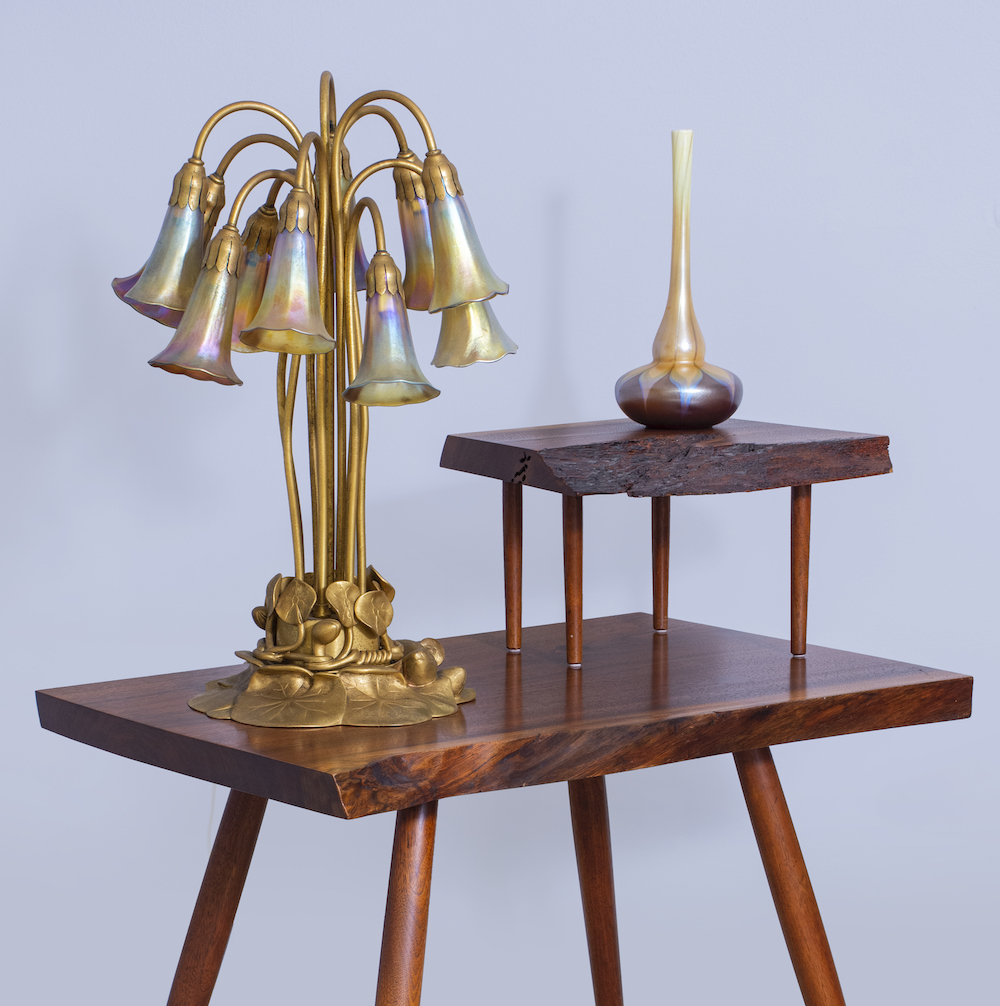
Most of the pieces in the showroom come from private collections (gone are the days when collectors could stumble across a valuable piece worth upwards of $50,000 for $15 at a garage sale) and many have been handed down through generations. Given the 77 years that Lillian Nassau has been dealing in Tiffany Studios, some pieces have even come back through the showroom multiple times.
I love how happy the Tiffany lamps are. They change a room and bring warmth to it. I think they’re at their finest on a rainy day as it’s like bringing in the sun.
Arlie Sulka
Over the years, Sulka has sourced several particularly special pieces. These include one of the first Tiffany Studios Dragonfly lamps ever made, which was exhibited in 1899 at the Grafton Galleries in London, where French art dealer Siegfried Bing introduced the world to Art Nouveau and the designs of Tiffany Studios; a fireplace hood designed by Louis Comfort Tiffany for the library of his own home on East 72nd Street that was found languishing in a garage behind spiderwebs and rust; and a pair of biomorphic carved timber doors that evoke intertwining branches designed in 1976 by Wendell Castle for the Gannett Co. executive offices.



“I’ve had a few moments where I’m sorry to see things go as I haven’t been able to enjoy them long enough,” Sulka admits. “Sometimes, I will strategically place a special piece outside my office so that while I’m working I can look at it and absorb it – then I’m happy and willing to pass it on!” Of course, there have also been special pieces that have gotten away, and for Sulka’s competitive spirit, that’s one of the challenges of the job. Given her love for searching out hidden jewels of Tiffany Studios and rare mid-century gems, it’s no surprise that she plans to continue her work for many years to come – and hopes to work on a book project and associated exhibition in the near future. “I don’t plan to retire,” she says. “I’ve said many times, they’re carrying me out in my chair! I love what I do so much – it’s an important part of my life and I just never want to stop.”
Heart of glass: 6 Tiffany Studios treasures from Lillian Nassau
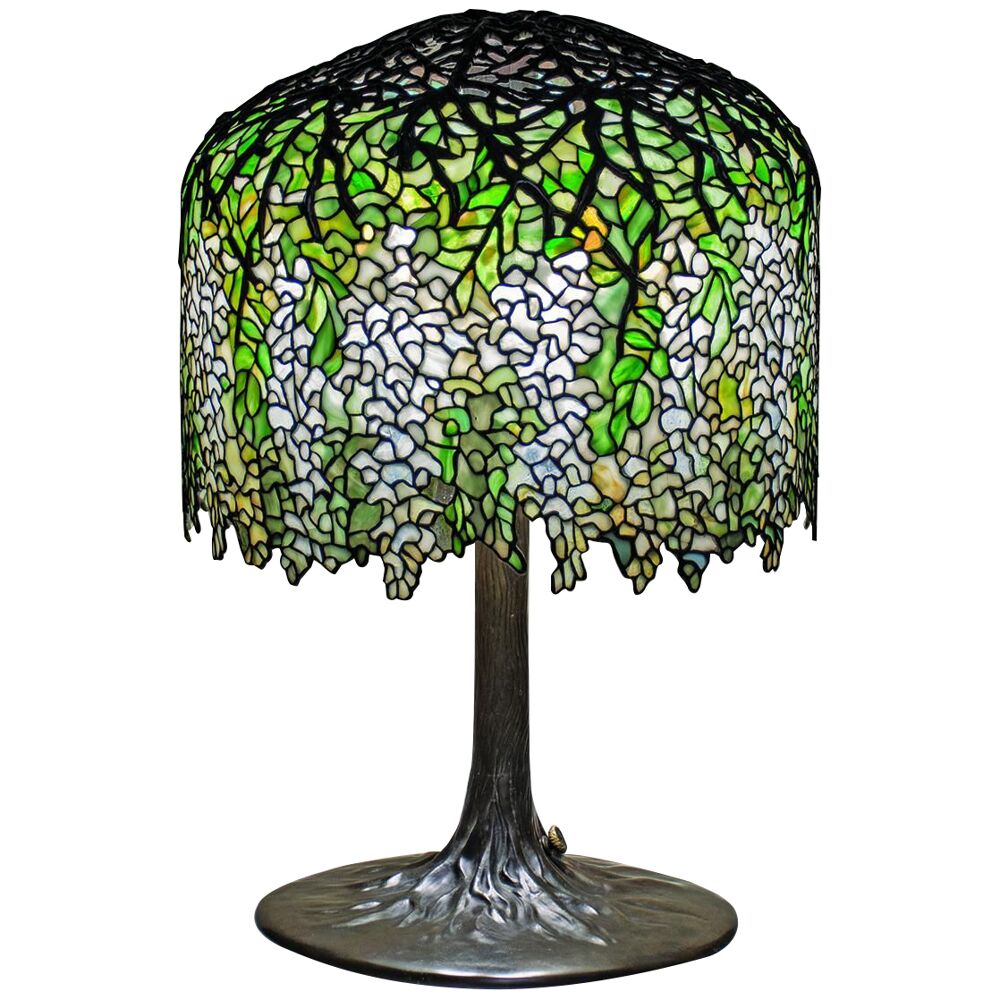
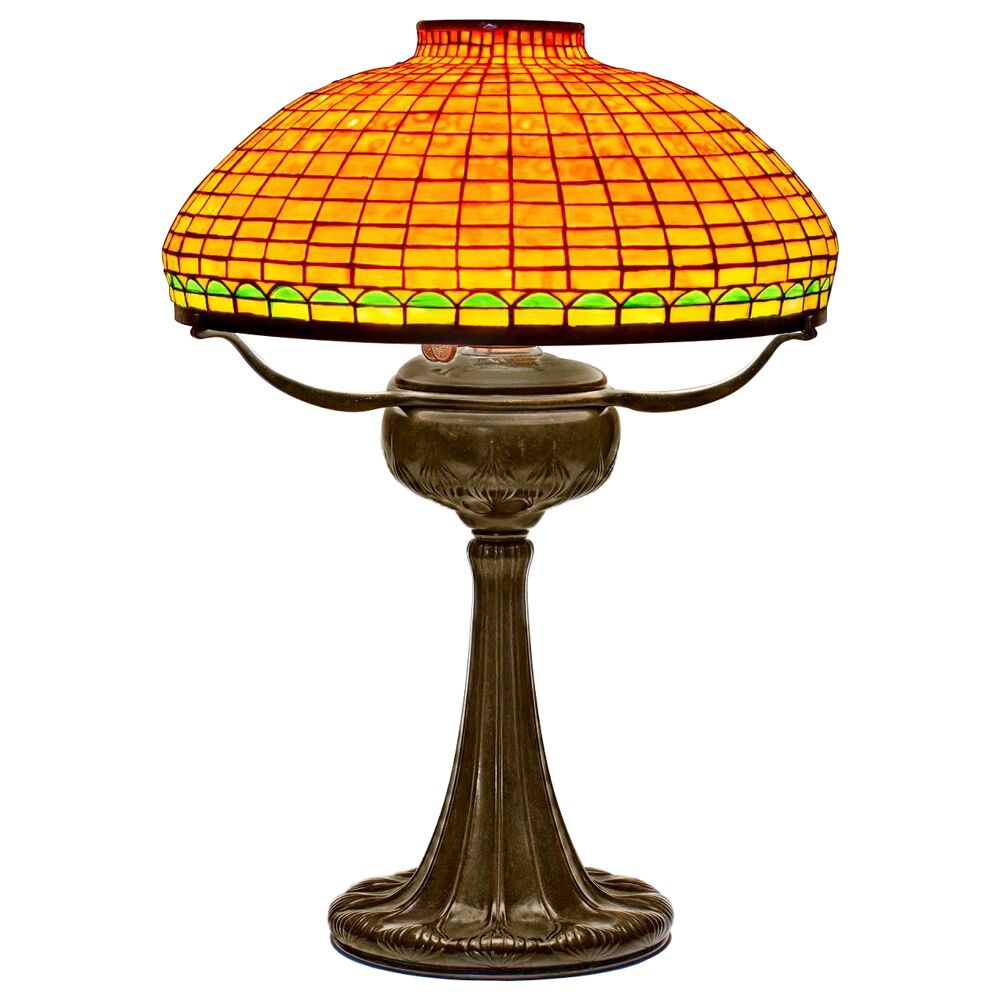
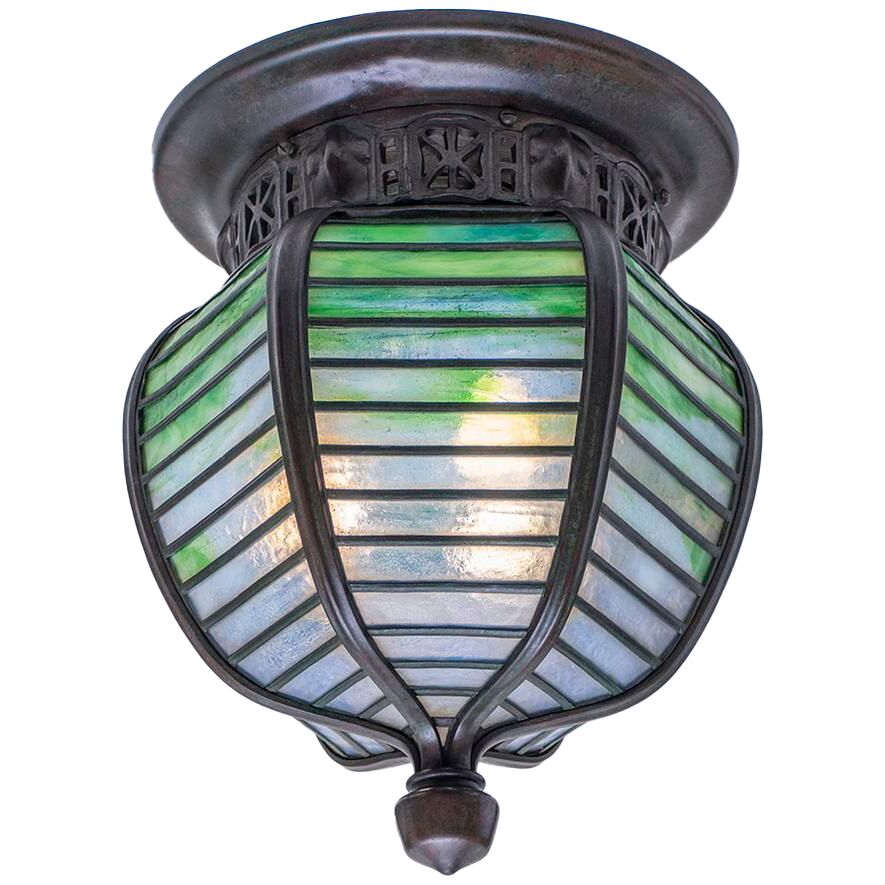


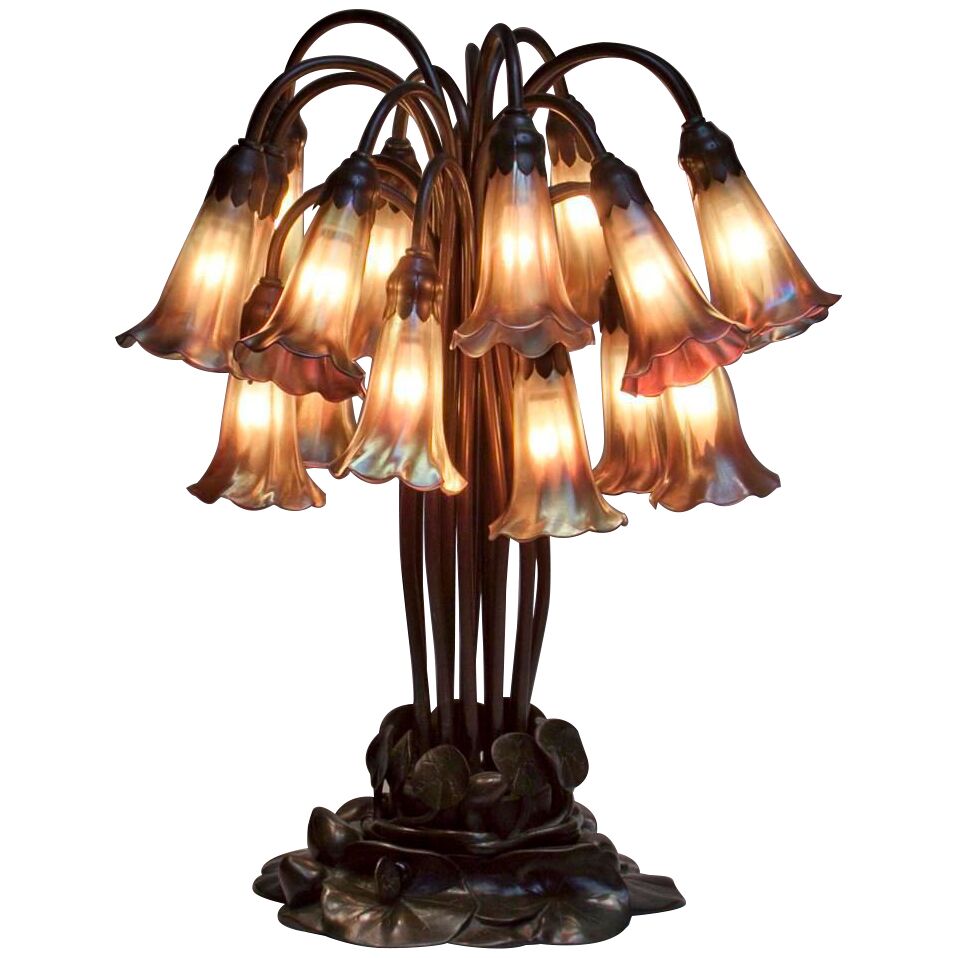
Effect Magazine is brought to you by Effetto



